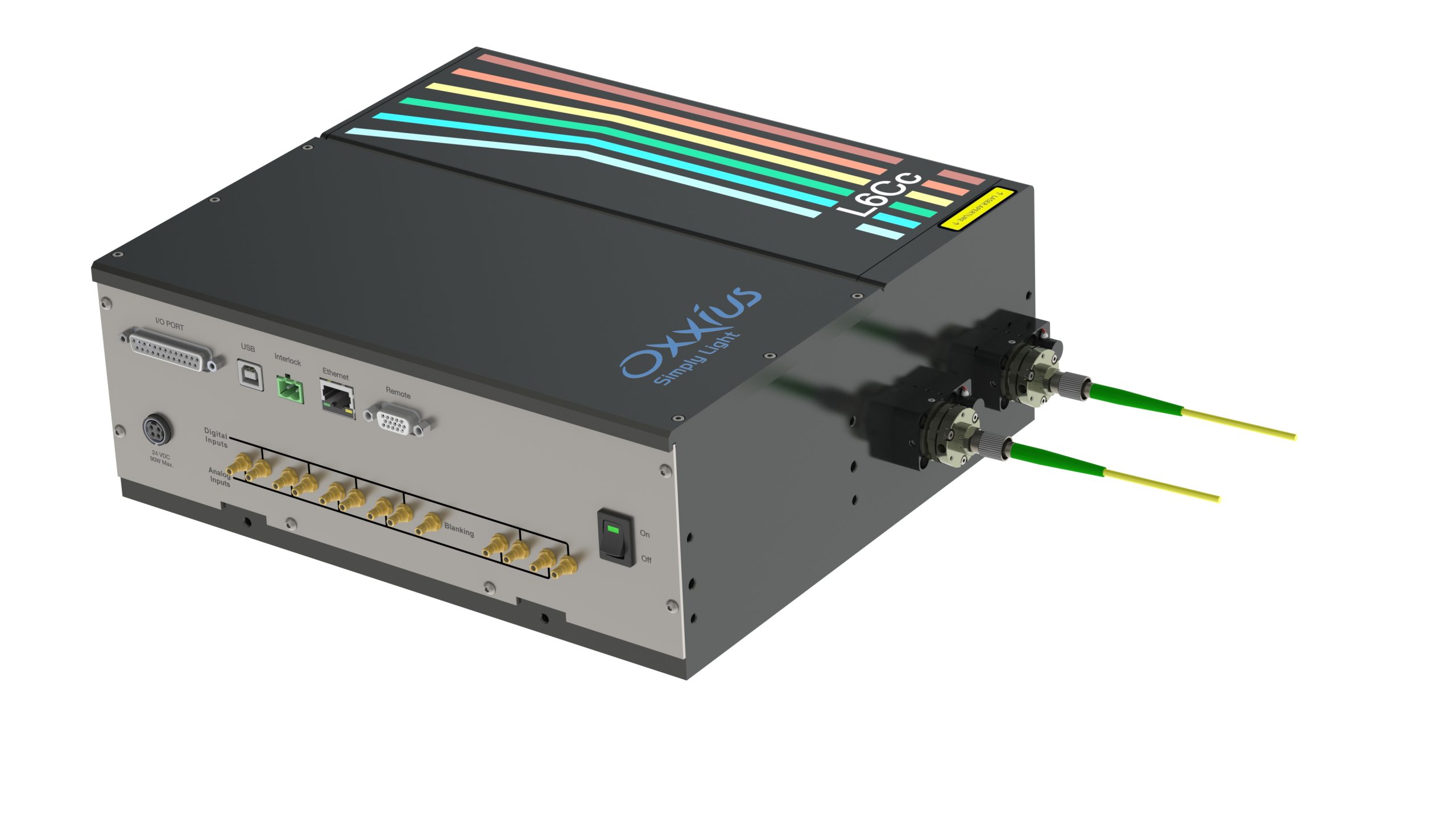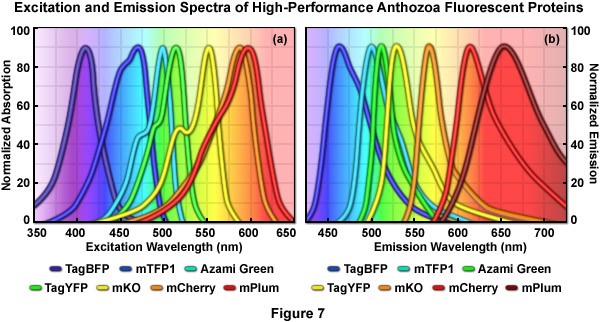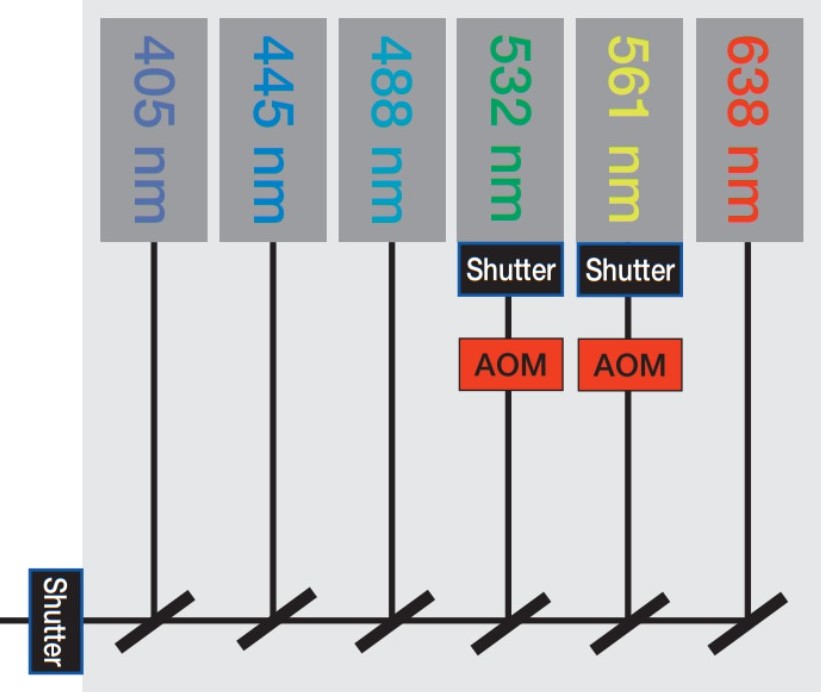
As discussed in a previous blog post, flow cytometry is an extremely valuable methodology employed by scientists around the world for analyzing individual cells via fluorescence tagging. In that blog titled “Flow Cytometry Review,” we went to great lengths to explain basic principles of the technique, and we introduced the concept of utilizing multiple excitation lasers to increase the number of available fluorophores. By using several lasers throughout the visible spectrum, you can now excite a wide variety of fluorophores such as the ones shown in the figure below, increasing the number specific cell properties that you can probe.
To make the process of integrating multiple lasers into one device, such as a flow cytometer, easier RPMC Lasers offers the LaserBoxx Combiner from Oxxius, which combines up to six different lasers with one colinear output beam dichroicly beam combined and coupled into a single-mode fiber optic cable. The block diagram below shows a schematic block diagram for a six-laser set-up which would be ideal for the group of fluorophores demonstrated in the previous figure.
In this particular blog, we are going to focus our attention, not on the application itself; instead, we are going to look at what are the key characteristics that you need to look for when choosing a laser combiner for you flow cytometer.
1. Wavelength Availability: As we explained above the most critical consideration when choosing a laser combiner for flow cytometry is to ensure that the laser wavelengths line up with the excitation spectra of your anticipated fluorophores. This is why the LaserBoxx can be configured with any combination of the 22 different wavelength laser options that Oxxius offers between 375 nm and 1064nm. It is important to note that many conventional fluorophores have excitation bands which overlap each other, so you must try and pick each wavelength to ensure that it can be used to excite the maximum number for fluorophores. Also, it is essential to keep in mind that for the dichroic mirrors used inside of a laser combiner each wavelength should be at least 10-nm apart. Since most fluorophores have excitation bands larger than 10-nm this is typically not an issue, but if you are working with narrower than usual absorption bands, the minimum separation must be taken into consideration.
2. Beam Quality: Flow cytometry measures the fluorescence emission of individual cells moving through a jet or microfluid cell, which are typically between 1-µm and 15-µm in diameter. Therefore, the laser combiner must emit a perfect TEM00 beam profile, so that laser can be focused to such a small spot size. As a result, it is always best practice to choose a laser combiner that has a single-mode fiber-optic output. Since the single-mode fiber acts as a spatial filter, it strips out any higher-order modes which may be present in the laser beam itself and ensure a perfect TEM00 beam, with an M2 < 1.05 for all wavelengths. Oxxius’ LaserBoxx is available with an individual or dual single-mode fiber-coupled outputs. The dual fiber option allows you to have one output use a solarization resistant fiber, which is optimal for shorter laser wavelengths, and the other to have low-OH fiber for longer wavelengths.
3. Modulation: The final primary consideration when choosing a laser combiner for flow cytometry are the modulation and triggering capabilities. Each laser must be individually addressable to trigger each of them independently or all at once, ensuring that the wavelengths of interest are incident on the cell stream at the appropriate time. Traditionally lasers for flow cytometry have been used in a CW or quasi-CW fashion, but recently there has been increased interest in measuring fluorescence lifetime to gain even more information. In these cases, a pulse width of a few nanoseconds is needed. The LaserBoxx is capable of providing both of these functionalities, by either direct modulation of the diode lasers, or by adding an Acousto-Optic Modulator (AOM) in between a DPSS laser and the dichroic mirror.
If you would like to get a more detailed understanding of the LaserBoxx, you can check out our white paper titled “Multi-Wavelength Laser Sources for Multi-Color Fluorescence Microscopy,” or click here to visit the product page for more detailed technical specifications. As always, you can also talk to one of our laser experts today by calling 1-636-272-7227.

 SHIPS TODAY
SHIPS TODAY 
